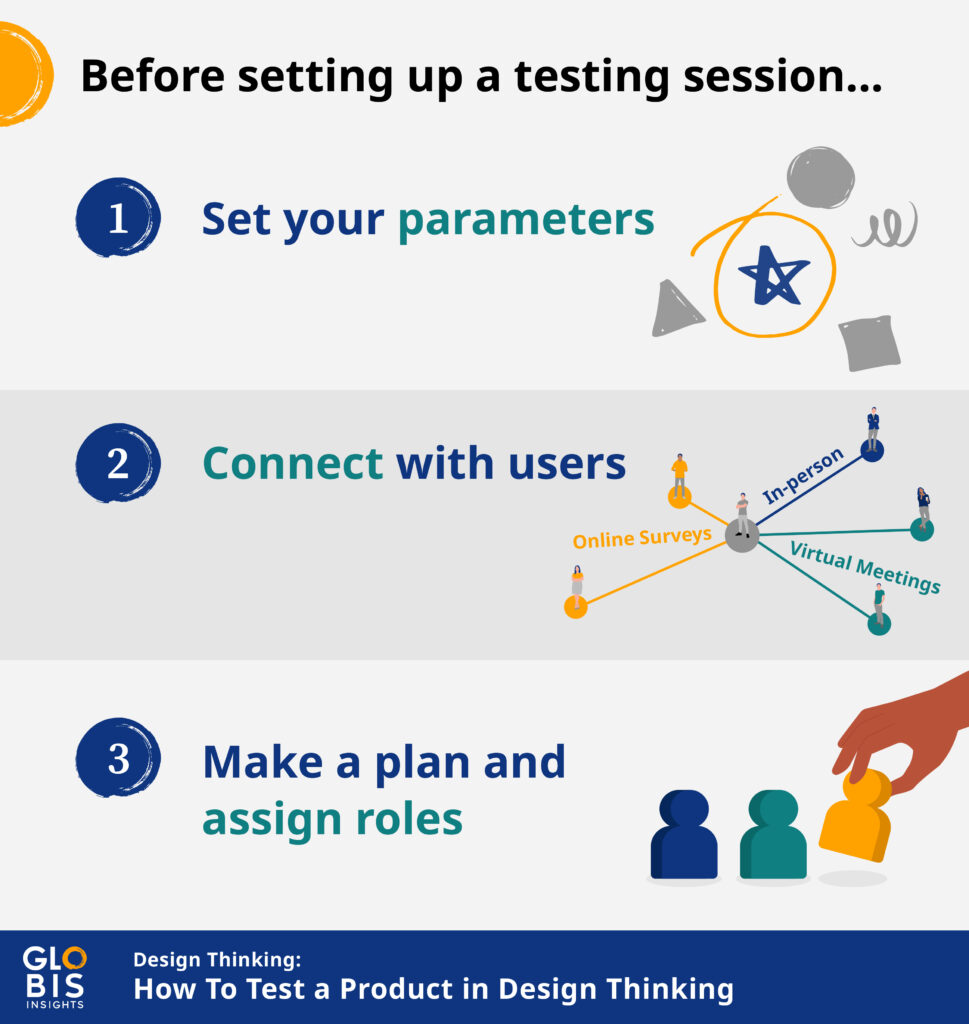Cheese! Cheeeeese!!
When voice activation on phone cameras first came out, people were excited about the prospect of snapping a hands-free selfie. But it quickly became clear there was a problem:
Voice activation didn’t recognize certain accents.
It worked flawlessly for a West Coast American accent, but if you spoke with a Vietnamese intonation, for example, you were out of luck. Somehow, accent diversity wasn’t considered during testing. As a result, this fancy new technology had an inherent flaw: accent bias.
With each new release of voice recognition technology, this issue is slowly being improved. But if design thinking principles had been properly implemented from the get-go, tech companies wouldn’t (still!) be playing catch up.
What is the testing phase?
In design thinking, the testing phase is the final step before rolling out a product. It’s the last chance to figure out how to make your design as user-friendly as possible.
There are five phases in design thinking:
- Empathize
- Ideate
- Define
- Prototype
- Test
But it’s important to keep in mind that this user-centered, problem-solving approach embraces a non-linear journey. For example, testing can often help designers to pinpoint flaws, which sends them right back to the drawing board.
While it can be difficult seeing and hearing your hard work being scrutinized, it’s all part of the creative process. This is your opportunity to get feedback “in the wild” with actual users, or a testing group that behaves as close as possible to the target audience. And if you have been implementing design thinking principles, the testing environment should be positive and productive.
Fear of failure, be gone!

A testing session can come in many forms depending on what you are designing, your budget, your timeframe, etc. Regardless of the setup, there are a few good practices to keep in mind:
1. Step back and let users figure it out
It can be frustrating to see a participant doing something you never anticipated and then struggling to connect the dots. But resist the urge to help them out. This is important data that will improve your design, so take a breath, and let them have at it.
2. Encourage participants to talk it out
Instead of trying to read your participants’ minds, have them talk through their thought processes. This will help you to understand the mental leaps they make so you’re not puzzled by user behavior you hadn’t accounted for.
Depending on the diversity of your group of participants, it can also help with uncovering unconscious biases you may have accidentally built into your prototype.
3. Open a discussion and ask questions
After you’ve completed a testing session, spend the time to gather feedback from your participants. Guide the discussion by asking open-ended questions.
- What did you think about this feature?
- Why did you find this setting difficult to find?
You are trying to get as much information from them as possible. Testing sessions can be a big investment, both timewise and financially, so take advantage of the market research opportunity. Your participants’ insight could be invaluable.
4. Don’t take criticism as a failure, use it to improve
If you’re like most people, it can take some time to learn to not take criticism personally. Certainly, if you’ve already done the hard work of empathizing with the user and focusing on the problem statement, it can be tough to hear that you’ve missed something. But it’s important to remember that market research is only half the story when it comes to creating something that seamlessly fits into daily life.
When listening to the feedback from a testing session, try as much as possible to shift your mindset from, “I’ve done something wrong” to “I can make this even better.”
Next Article
Design Thinking Principles: A How-To Guide
Tom Kelley on Creative Confidence, Design Thinking, and Empathy for Startups
How to Promote Innovation in a Company as a Designer
Setting Up a Testing Session
Now that you have the right frame of mind. Here are three things to consider when preparing to test your prototype.
Set your parameters
Decide ahead of time what is and is not within the testing scope.
Depending on your current needs, you may want to do a comprehensive test of every feature or, instead, focus on a few.
Some product testing examples include:
- Concept validation: Sharing the idea for the product early on and testing the feedback from a selected user group.
- First-click: Using heatmap technology to see where participants gravitate towards on an interface.
- Usability analysis: Giving participants tasks to complete and evaluating at which stage they run into difficulties.
Choose how to connect with users
Confirm what method you will use to communicate with participants.
Does the testing session require in-person attendance? Or are virtual meetings, and online surveys sufficient? Once you have an idea of the target base for your participants, decide on how you want to reach out to them. If, for example, you want in-person testing, then communication should be limited to residents within a certain radius. Online, you have many different channels and need to decide which one is most prevalently used by your target market.
Make a plan and assign roles
Create a document with all the important information so everyone in your team is on the same page.
You want your testing session to run as smoothly as possible and this means bringing all the moving parts together to plan the prep, day-of, and follow-up. Delegate everyone’s responsibilities and establish clear communication from the get-go.
Your plan should answer the basic who, what, where, when, why, and how.

Test Away!
Now, with your testing plan in hand, it’s time to get the ball rolling. As much as possible, enter each testing session with an open mind. Use your creative confidence to find the opportunity in problem-solving.
Good luck and happy testing!






